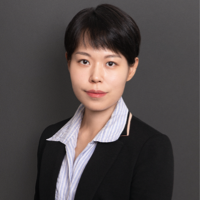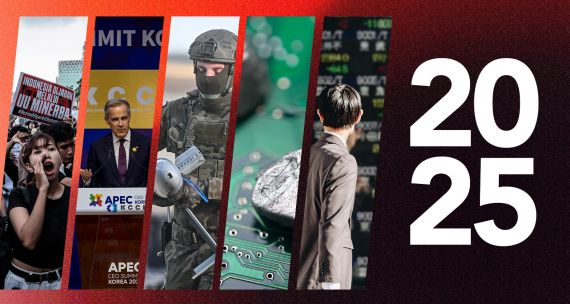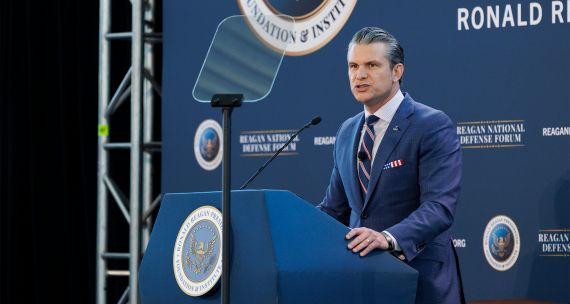The Takeaway
The Asia-Pacific Economic Cooperation (APEC) Leaders’ Summit, held in Gyeongju, South Korea, from October 31 to November 1, 2025, reaffirmed the value of high-level dialogue and underscored the widening gap between aspiration and reality on global trade.
U.S. President Donald Trump’s appearance was brief but impactful: he prioritized bilateral dealmaking with key partners, notably China and South Korea, rather than collective deliberations and departed before the summit started. Chinese President Xi Jinping, meanwhile, assumed the spotlight, casting China as a champion of multilateralism, in a calculated contrast to Washington’s protectionist stance.
For now, APEC’s relevance lies in being one of the few remaining venues where rivals can talk, and where no single power can set the rules.
In Brief
- APEC 2025 concluded with leaders adopting the “Gyeongju Declaration,” which reaffirmed commitments to connectivity, innovation, and inclusive, sustainable growth. The host’s chosen theme, “Building a Sustainable Tomorrow: Connect, Innovate, Prosper,” guided these goals, introducing artificial intelligence (AI) and demographic change as new cross-cutting priorities, and even recognizing cultural industries as a regional growth engine.
- The summit underscored APEC’s role as a platform for high-profile bilateral meetings. Xi made his first visit to South Korea in 11 years, a trip that yielded seven bilateral memoranda of understanding (MOUs), including currency swaps and joint responses to online scams. Xi also held inaugural talks with Japan’s new prime minister, Takaichi Sanae, as both sides vowed to seek a “mutually beneficial” relationship.
- Major side agreements underscored South Korea’s drive for tech and green growth. Nvidia’s CEO, Jensen Huang, met with the heads of several Korean conglomerates — including Samsung, SK Group, Hyundai Motor, and Naver — marking Seoul’s accelerated efforts to become one of the world’s top three AI powers. Nvidia joined a partnership supplying 260,000 advanced chips for Korea’s AI push, alongside a US$3-billion Nvidia–Hyundai Motor Group AI joint venture. The business leaders also advanced clean energy co-operation, pledging to accelerate renewable energy transitions and discussing bolstering semiconductor supply chains.
- Trump turned the sidelines of APEC into the setting for high-stakes bilateral deals. He and Xi reached a limited trade truce: the U.S. cut its overall tariff rate on Chinese goods from 57 to 47 per cent, while China pledged to crack down on fentanyl precursors, pause rare-earth export controls for one year, and resume large-scale soybean purchases. Trump and South Korea’s president, Lee Jae Myung, agreed to reduce reciprocal tariffs from 25 to 15 per cent, with Seoul committing to invest up to US$350 billion in the U.S. and to seek U.S. approval for nuclear sub fuel access. Takaichi signed a deal on rare earth and energy infrastructure with Trump, while Taiwan made progress on a potential bilateral trade pact to lower its 20 per cent U.S. tariff burden.
- Canadian Prime Minister Mark Carney’s meeting with Xi on the sidelines marked a “turning point” in China–Canada engagement after years of strained relations, according to Carney himself. Additionally, Carney offered to host APEC in 2029, which would be the first time that Canada has hosted the forum since 1997.
Implications
The balance between Trump’s bilateralism and APEC’s multilateral spirit remains uneasy. Trump’s one-off bargains grabbed headlines but sidelined APEC’s collective agenda. His temporary truce with China eased tensions but left record-high tariffs largely in place. Both Beijing and Washington retain the ability to reimpose tariffs, tighten export controls, or walk away entirely if they believe the other side is not delivering, making the truce inherently fragile. The U.S.–South Korea deal framework, while smoothing over points of friction, mostly around autos and investment, does not fully address the broader trade imbalance or how the implementation of the deal will come about. In brief, the various meetings in Gyeongju bought time, but did not necessarily offer long-term solutions. The fundamental U.S.–China economic rivalry will remain as the region’s defining fault line.
Xi’s prominence at the summit underscored how China is exploiting inconsistencies in U.S. policy to cast itself as the defender of open trade during “turbulent times.” That message resonated with many economies but also reminded them, especially U.S. allies, of the risks of overexposure to Beijing. Most APEC members remain uneasy with China’s practices — subsidies, coercive trade measures, and export bans, to name a few — even as they seek access to its huge market. Canada’s stance also reflects that tension: squeezed by U.S. tariffs, Ottawa is reopening dialogue with China but must do so with caution. Carney’s meeting with Xi can be seen as a pragmatic hedge, not a pivot.
What’s Next
1. Fraught ‘implementation phase’ awaits U.S., China
Any setback — such as a flare-up over technology sanctions or unmet commitments to purchase the other’s exports — could unravel the U.S.–China truce. The longer-term durability of this short-term truce will shape business confidence across the region in 2026.
2. APEC 2026 an opportunity to gauge nature of China’s leadership
As next year’s APEC host, China will set the forum’s agenda amid uncertainty about the U.S. and its trade posture. Xi Jinping is expected to promote multilateral initiatives like a potential Free Trade Area of the Asia-Pacific and digital trade frameworks. The key question is whether the U.S. will actively participate in or disengage from such discussions. How China handles sensitive issues like Taiwan’s participation will also be closely watched. The 2026 summit will test APEC’s capacity to advance meaningful cooperation despite the strategic rivalry between its two largest members.
3. Canada–China bilateral thaw still in early days
According to an official statement from Carney’s office, Carney and Xi discussed trade irritants, including canola, seafood, and electric vehicles. Carney also accepted Xi’s invitation to visit China. Still, some experts are urging Ottawa to proceed carefully, emphasizing that Canada should have “modest expectations” for any reset, recognizing the difficulty of negotiating with China in the current trade war environment.
• Edited by Vina Nadjibulla, Vice-President Research & Strategy, and Ted Fraser, Senior Editor, APF Canada





